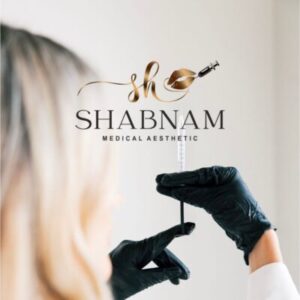
Full-Face CPAP Masks
CPAP can be a significant intervention in enhancing the quality of sleep in patients with obstructive sleep apnea (OSA). Nevertheless, the comfort of masks is critical in the success over the long run. Research indicates that about half of the people who use CPAP experience difficulties during the initial year and this is usually because of discomfort or lack of fit in the mask (Sleep & Sinu Centers).
Understanding the Full-Face CPAP Mask
Full-Face CPAP Mask is used to cover both the nose and the mouth so that pressurized air could enter both levels of the airways. The design is particularly advantageous to the individuals who breath mouth or have chronic nasal congestion. According to the Sleep Foundation, such masks can be characterized as the most suitable ones that one should use in case they breathe by mouth.
In contrast with the nasal-only mask, full-face mask will have a large cushion that covers both airways at the same time. A little bigger in size; this is with secure seal, though you are about 4 to 6 ounces in weight, they will offer you a secure seal even when your mouth is open when you are asleep. When the nasal breathing is not the most effective type of CPAP therapy, sleep specialists may suggest full-face mask application.
Benefits of Full Face CPAP Masks
When fitted properly, full-face masks offer key advantages:
- Allows mouth breathing: You can breathe through your mouth or nose without breaking the seal. This helps you stay consistent with therapy even if your jaw relaxes or drops during sleep.
- Tolerates nasal congestion: Allergies or nasal blockage will not interrupt airflow, as the mask allows you to inhale through your mouth as well.
- Handles higher pressures: The larger design can comfortably support higher CPAP pressure settings compared to smaller mask styles.
- Stable for back-sleepers: When lying on your back, the seal remains secure because the mask stays firmly in place against the pillow.
Disadvantages of Full Face CPAP Masks
Full-face masks also have some drawbacks:
- Bulk and claustrophobia: Many users find the large cushion somewhat confining. Because the mask covers much of the face, it can feel bulky—especially for side or stomach sleepers.
- More leaks: A larger mask surface means more potential points for air to escape. Even a small shift can lead to leaks, often near the top of the mask, which may cause dryness in the eyes or noise during use.
- Facial hair issues: Beards or even short stubble can interfere with the mask’s seal. Even a day’s hair growth may affect the fit and reduce the effectiveness of the therapy.
- Blocked vision: Most full-face masks partially cover your field of view, making it difficult to wear glasses or watch television comfortably while using the mask.
- Skin pressure: Because of the larger size, there are more strap contact points. If the mask isn’t adjusted correctly, it can cause redness or pressure marks on the skin.
Full Face vs CPAP Nasal and Nasal Pillow Masks
CPAP masks are of three main types, each one of which fits the sleeping habits and breathing needs. Nasal masks are worn over the nose only and are in most cases smaller and lighter than full face masks. They fit well with individuals who mostly breathe using their nose and they are also more comfortable to use. Even smaller are nasal pillow masks, which have soft inserts that are placed at the nostrils entrance. They give the most extensive field of vision and an excellent option to those who become claustrophobic or roll over a lot as they sleep. But nasal masks as well as nasal pillows depend on nasal breathing. In case you have the habit of sleeping with your mouth open or have severe nasal congestion, such options can be air leaks and poor therapy.
In this situation, a complete face mask, covering both the mouth and nose, can be required. Although it will be a little larger than nasal models, it will guarantee even airflow and proper treatment. Noseal pillows or masks are used by many users and then they change to a full-face design in case of discomfort or problems during therapy.
Click Here – More Information Related to the website
Tips for Using Your Full Face Mask
- Fit carefully: Position the cushion so it sits comfortably between your nose and chin, and tighten the straps evenly. The fit should be snug but not overly tight, as overtightening can cause leaks or discomfort.
- Clean and replace regularly: Wash the mask and cushion daily. Replace the cushion every 3–6 months (or according to manufacturer guidelines) to maintain hygiene and a proper seal. A worn cushion can compromise therapy effectiveness.
- Trim facial hair: Even short stubble can interfere with the seal. Shaving or trimming facial hair can help maintain a secure fit.
- Use humidification: A heated humidifier can reduce dryness in the mouth and eyes, making therapy more comfortable.
- Try different designs: Newer full-face masks are often designed to be less bulky. If your mask feels too large, ask your provider about alternative models that may offer a lower profile and improved comfort.
- Use a CPAP pillow: Specially shaped CPAP pillows have cutouts to accommodate the mask, helping reduce leaks and pressure points, especially for side sleepers.
FAQ
- What is a full-Face CPAP Mask and who needs one?
The nose and the mouth are covered with a complete face mask. This is normally required when breathing through the nose is not adequate such as when breathing through the mouth at night or when there is chronic nasal congestion. A full-face mask can prove to be crucial in CPAP therapy in chronic mouth-breathers. - How do full-face masks differ from nasal and nasal-pillow masks?
Nose masks cover the nose only and are smaller in size whereas nasal pillows are placed inside the nostrils. They both have the requirement that you breathe via your nose, and in case you open your mouth, or congested within your nose, they are prone to leakage. Full-face masks can also include the nose and mouth thereby permitting therapy to proceed even in such a condition but is larger than nasal ones. - What are the advantages and disadvantages of full-Face CPAP Masks?
Advantages: You can breathe through your mouth or nose without interrupting therapy, and full-face masks handle higher pressures and nasal congestion effectively.
Disadvantages: They are larger and may feel claustrophobic. There are more potential points for air leaks, which can dry the eyes, and facial hair can interfere with the seal. - Can I use a CPAP nasal pillow mask if I breathe through my mouth?
No. Nasal pillow masks are totally dependent on nasal air. Narcole nasal pillows can leak and decrease the efficiency of the therapy in the event of breathing via the mouth or in case of chronic sinus congestion. A complete mask or hybrid mask would be preferable in such instances. - How do I ensure my full-face mask fits correctly?
Position the cushion evenly from the bridge of your nose down under your chin. Adjust the headgear straps one at a time until the fit is snug but comfortable. The mask should feel secure without causing pain. Turn on the CPAP machine and check for leaks, adjusting the mask or straps as needed to achieve a proper seal.
Conclusion
Full-Face CPAP Masks can be highly effective for the right patient, but they often require some patience to fit comfortably. If a full-face mask doesn’t suit you, nasal masks or nasal pillows are good alternatives. Sleep specialists emphasize that the right mask is out there for everyone. Give each mask style a fair trial it may take a few attempts to find the perfect fit. Don’t hesitate to ask your sleep provider for guidance on proper fitting. With the right mask and correct adjustments, CPAP therapy can become both comfortable and life-changing.



